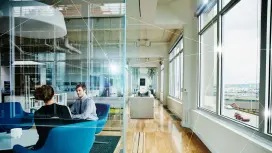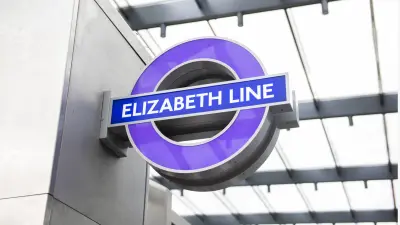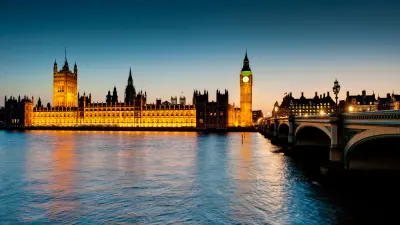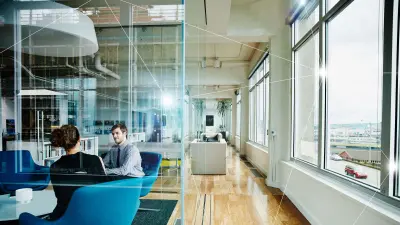A brilliant example: innovative fire protection for Europe’s largest LED ceiling
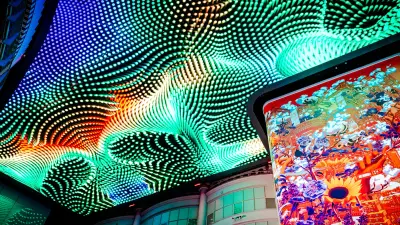
History meets the future in the heart of the city of Manchester in northwest England. Where newspapers were once printed, people now eat, dance, work out, play – and marvel at an impressive 115-meter-long LED installation 40 meters above the ground. A unique, innovative security solution installed by Protec Fire and Security Group (Protec UK), a Bosch company, ensures a carefree experience for visitors.
A word of prudence: after entering this building at Manchester’s heart, you’ll see the world with different eyes. The beautiful exteriors of the former trading houses built in the late 19th century are impressive. Now, however, they contain restaurants, entertainment, leisure venues and bars, among other things. While strolling through the shopping mall that extends all the way through the complex, you inevitably find your eyes drawn upward. At a height of 40 meters, where there would normally be a ceiling or glass dome to keep out the wind and weather, there are dancing lights. A fascinating digital ceiling, spanning 1,000 square meters, is like a 115-meter-long animated artwork. It turns a visit to Printworks into an immersive experience. The colors are reflected by the floor and surrounding glass panes, and the background music is synchronized with the moving images. However, this impressive multimedia installation was testing the limits of the existing fire protection system for the over 34,000-square-metre entertainment area. Protec Fire and Security Group (Protec UK), a Bosch company, was therefore asked to optimize it.
Europe’s largest LED ceiling called for pioneering fire protection ideas
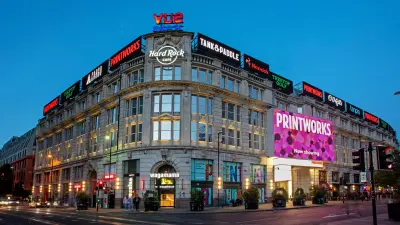
The complex holding Printworks consists of three buildings that were joined to create a roofed-over mall. On one side are the halls of the former printshop that has given the complex its name. Opposite them are areas that were once editorial offices and storerooms. Where presses used to print thousands of newspapers a day, today visitors can play indoor minigolf, sing karaoke, watch movies or work out, among many other things. The building complex was converted into an entertainment center in 2000 and later, in 2023, extensively renovated without interrupting its operation. And since 2024, the passageway has been crowned by Europe’s largest LED ceiling. Boasting more than ten million pixels, it is used to show 3D animations, colorful collages and more. According to the operators, it is the only LED module of its kind in the world that has been tested for flammability and is certified in compliance with the applicable UK guidelines.
“Our company has been responsible for the fire protection solution in Printworks for over 15 years,” says Chris Marsh, a sales service manager at Protec UK. “So we know all of the complex’s intricately connected buildings like the backs of our hands.” The goal was to redesign the existing fire alarm so that fire protection could also be guaranteed for the new LED screens. “The operators had confidence in our team’s ability to implement their innovative idea,” he adds. The electronics on the ceiling made it necessary to develop an alternative to a fire extinguishing system, which is what would normally be installed there. “We also modernized the existing fire detection systems and installed aspirating smoke detectors around the area,” explains Chris Marsh.
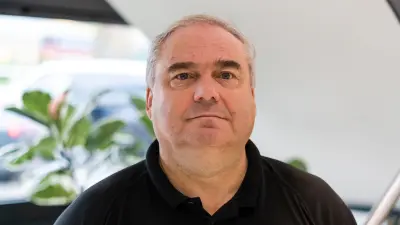
About our expert Chris Marsh
After joining Protec UK in 1990 as a commissioning engineer, Chris Marsh spent nearly a decade in various management roles related to implementing fire protection solutions. For 21 years he has been a service sales manager at that Bosch subsidiary, winning and serving numerous major clients in England. “The Printworks tasked us with developing a completely new solution for a completely new technology in the building. Because of our team’s outstanding expertise, we’re happy to accept challenges of this kind – they are opportunities for us to show what state-of-the-art fire protection systems are capable of.”
We are bridge builders, custom tailors, pioneers and enablers
Self-learning algorithms can tell if party fever turns into fire
“After looking at the site with the Printworks operators, we discussed how the fire extinguishing system would need to be reconfigured. If we left the system in the previous state where it continued to run along the ceiling, in the event of a fire alarm the LED panels would get soaked,” says Chris Marsh. His colleague, Alan Davies, is an expert on fire alarm systems. He divided the 115-metre-long LED ceiling running down the main street into four sections and installed aspirating smoke detectors on the surrounding walls. “With such high ceilings, normally we would deploy optical or video-based fire detection. But in this case, there was a risk that the light given off by the LED ceiling might cause false alarms. So instead, we mounted aspirating smoke detectors and specialist flame detectors at a height that our service team are able to carry out inspection and testing without the need of specialist access equipment. This solution also makes it easier to do maintenance work without annoying the guests down below,” explains Alan Davies. “It’s designed so that a single detector isn’t enough to trigger an alarm; a second one has to confirm that there is a fire situation.” In that event, a signal is transmitted to the security team in the control room and a timer starts counting down. From that moment on, the team has three minutes’ time to verify that there is a fire or else deactivate the alarm. This has to be done within 180 seconds, otherwise the deluge suppression system is activated. Understandably, the client would like to avoid getting visitors wet unless there is a good reason for it. “If the alarm is activated, the security team immediately uses a video solution to check the on-site situation and send personnel straight to the affected area if required,” adds Chris Marsh.
“The aspirating system combines two technologies, a highly sensitive obscuration detector and an invisible particle detector. At 41 sampling hole positions, air is continuously drawn in via sampling pipes and routed to the detectors for analysis. Self-learning algorithms analyze the air to detect fire and smoke particles. If the concentration of these particles is greater than a defined threshold, the system triggers a fire alarm condition. At the same time, specialist flame detectors also monitor the surrounding area. If the flame detection beam is interrupted by smoke, the alarm is triggered when the number of particles exceeds a certain level. The control room is alerted only if both systems simultaneously send an alarm,” explains Alan Davies, who was responsible for precisely placing the detectors. Among other things, he calculated the volume of space to ensure that air samples are taken across all areas in compliance with the relevant standards. There were also a few unexpected surprises while implementing the project. “A 150-year-old site like this one has its quirks,” adds Chris Marsh. “The fire extinguishing system was getting on in years, and pipes needed to be replaced. And all the work was done under enormous time pressure without interrupting operation of the complex.”
High-precision nighttime work at a height of 40 meters
Without a doubt, the biggest logistical challenge was installing the new systems at a dizzying height while everything continued operating as usual all around. “In order to coordinate the project and everyone involved, we held weekly meetings with the site manager and architects. Fire detectors were installed first, followed by the connections and pipes for the sprinklers, and then tested the fire alarm system. Finally, the electricians arrived to attach the three mega screens to the ceiling,” explains Chris Marsh. The main street was divided into four zones. A huge scaffold was put up in the first for installing the fire systems and LED screens, then moved to the second zone and so on. It took two months just to assemble the scaffold at the start of the project and take it down again afterward.
“Within the hours when we were allowed to use the scaffold, we mainly worked nights between 2 and 6 a.m. to avoid interfering with business in the shops and restaurants during the day and the pubs and bars in the evening. While the scaffold was being moved, we worked on the fire protection systems inside the buildings and got everything ready for the next zone,” recalls Chris Marsh. “The project was unusual and quite complex, since other conversion work was going on in the buildings at the same time. Again and again, this resulted in changes in procedures, but we succeeded in flexibly responding to them. The customer is very happy with the result and we stayed on budget, which makes me proud.” “We are thrilled to have Protec Fire and Security Group as a trusted partner in keeping Printworks safe and secure. With the installation of our state-of-the-art screens, it was essential to have cutting-edge safety solutions in place to protect our building, staff and – most importantly – our visitors. Thanks to Protec’s expertise and commitment, Printworks is now safer than ever, ensuring everyone can enjoy the experience with total peace of mind”, says Wing Liu, Operations Manager at Printworks. And the successful collaboration is continuing: the team of Protec UK is now preparing a cloud solution for remotely providing services, and talks have already started on another project for the same customer.
